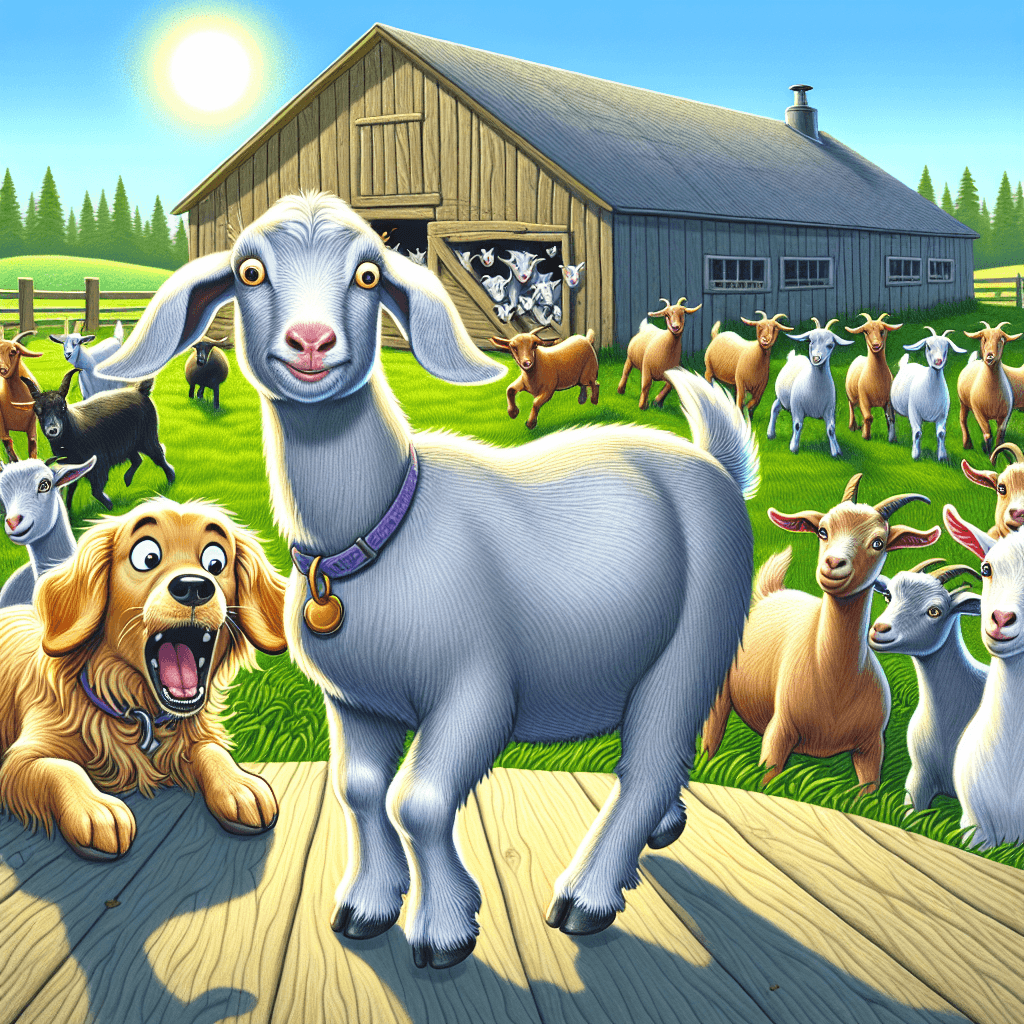Why do some goats completely freeze up and fall over when startled
It looks like a dramatic faint, but these goats never actually lose consciousness—discover the bizarre genetic glitch that causes their muscles to instantly go rigid and send them toppling over.


Too Long; Didn't Read
TLDR: A genetic condition called myotonia congenita causes their muscles to tense up and lock when startled, making them fall over. They don't actually faint or get hurt; they just go completely stiff for a few seconds.
The Fainting Goat Phenomenon: Why Do Some Goats Completely Freeze Up and Fall Over When Startled?
Have you ever seen a video of a goat that, upon being surprised, suddenly seizes up, its legs go stiff, and it topples over like a wooden statue? It's a bizarre and often comical sight that has made these animals viral internet stars. But this strange behavior isn't a playful trick or a dramatic display of fear. It’s a very real and fascinating medical condition. This post will delve into the science behind the "fainting goat," exploring the unique genetic trait that causes this reaction, what the experience is actually like for the animal, and the history of this peculiar breed.
It's Not Fainting: Meet the Myotonic Goat
First, let's clear up a common misconception: these goats don't actually faint. Fainting, or syncope, involves a temporary loss of consciousness. The goats that exhibit this freezing behavior, officially known as Myotonic goats or Tennessee Fainting Goats, remain fully conscious and aware throughout the entire episode.
What appears to be a faint is actually an involuntary, temporary stiffening of their muscles. When startled by a loud noise, a sudden movement, or even just excitement, their skeletal muscles—particularly in their legs and neck—tense up and refuse to relax for about 10 to 20 seconds. For a young, inexperienced goat, this sudden rigidity makes it impossible to stay balanced, causing them to fall over.
The Genetic Glitch: Myotonia Congenita
The root cause of this peculiar trait lies in a genetic condition called myotonia congenita. This is a hereditary disorder that affects the chloride ion channels in the membranes of muscle cells. Here’s a simplified breakdown of what happens:
- The Signal to Move: When the brain sends a signal to move, an electrical charge travels along the nerves to the muscle fibers, causing them to contract.
- The Role of Chloride: For the muscle to relax after contracting, tiny channels in the muscle cell membrane open up, allowing negatively charged chloride ions to flow in. This influx of ions helps to reset the cell's electrical balance, allowing it to relax.
- The Faulty Channel: In myotonic goats, a genetic mutation results in faulty chloride channels. These channels don't function properly, so the flow of chloride ions is significantly reduced.
- Delayed Relaxation: Without the quick influx of chloride, the electrical charge that caused the contraction lingers. The muscle remains in a state of extended contraction, leading to the characteristic stiffness.
This condition is an inherited recessive trait, meaning a goat must inherit the gene from both parents to exhibit the myotonic reaction.
Does It Hurt? The Goat's Perspective
A question that naturally arises is whether this experience is painful or frightening for the goats. According to veterinarians and breed experts, the condition itself is not considered painful. The goats are simply experiencing a sudden, intense muscle cramp all over their body.
Interestingly, as myotonic goats get older, they often learn to adapt. While a young kid might fall over every time it's startled, an adult goat may simply learn to brace itself or run away with a stiff, awkward gait until its muscles relax. They anticipate the stiffness and manage their bodies accordingly, demonstrating a remarkable ability to live with their condition.
A Curious History: Where Did They Come From?
The history of the myotonic goat is as unique as its condition. The breed first appeared in Marshall County, Tennessee, in the 1880s. The story goes that a farm laborer named John Tinsley arrived in town with four of these unusual goats. When he left a year later, he sold the goats to his employer, Dr. H. H. Mayberry, who was intrigued by their condition and began to breed them.
Historically, some farmers reportedly kept a myotonic goat with their flocks of more valuable sheep. The grim logic was that if a predator like a coyote attacked, the goat would freeze up, providing an easy target and allowing the rest of the flock to escape.
Conclusion
The "fainting goat" is far more than just an internet meme. It's a living example of how a single genetic mutation can create a truly unique animal characteristic. This phenomenon, correctly identified as myotonia congenita, causes a temporary but harmless muscle stiffness, not a true faint. These animals remain fully conscious and, over time, even learn to manage their sudden rigidity. So, the next time you see a video of a goat toppling over, you can appreciate the fascinating science behind the spectacle—a genetic quirk that has defined an entire breed.
More Articles

Why did Napoleon's soldiers' buttons turn to dust in the freezing Russian cold?
It wasn't just the cannons or the Cossacks that defeated the Grande Armée; the unraveling of Napoleon's empire may have started with a bizarre chemical reaction in the very buttons holding their coats together.

Why do scorpions glow a brilliant blue-green color under an ultraviolet light?
A scorpion's deadly sting is famous, but its most baffling secret is the brilliant blue-green glow it hides in plain sight.

Why do TV sitcom living rooms often have stairs that seem to lead nowhere?
Ever notice that random staircase in your favorite sitcom that doesn't seem to lead anywhere? It’s not a design flaw, but a brilliant production secret that makes every scene more dynamic.